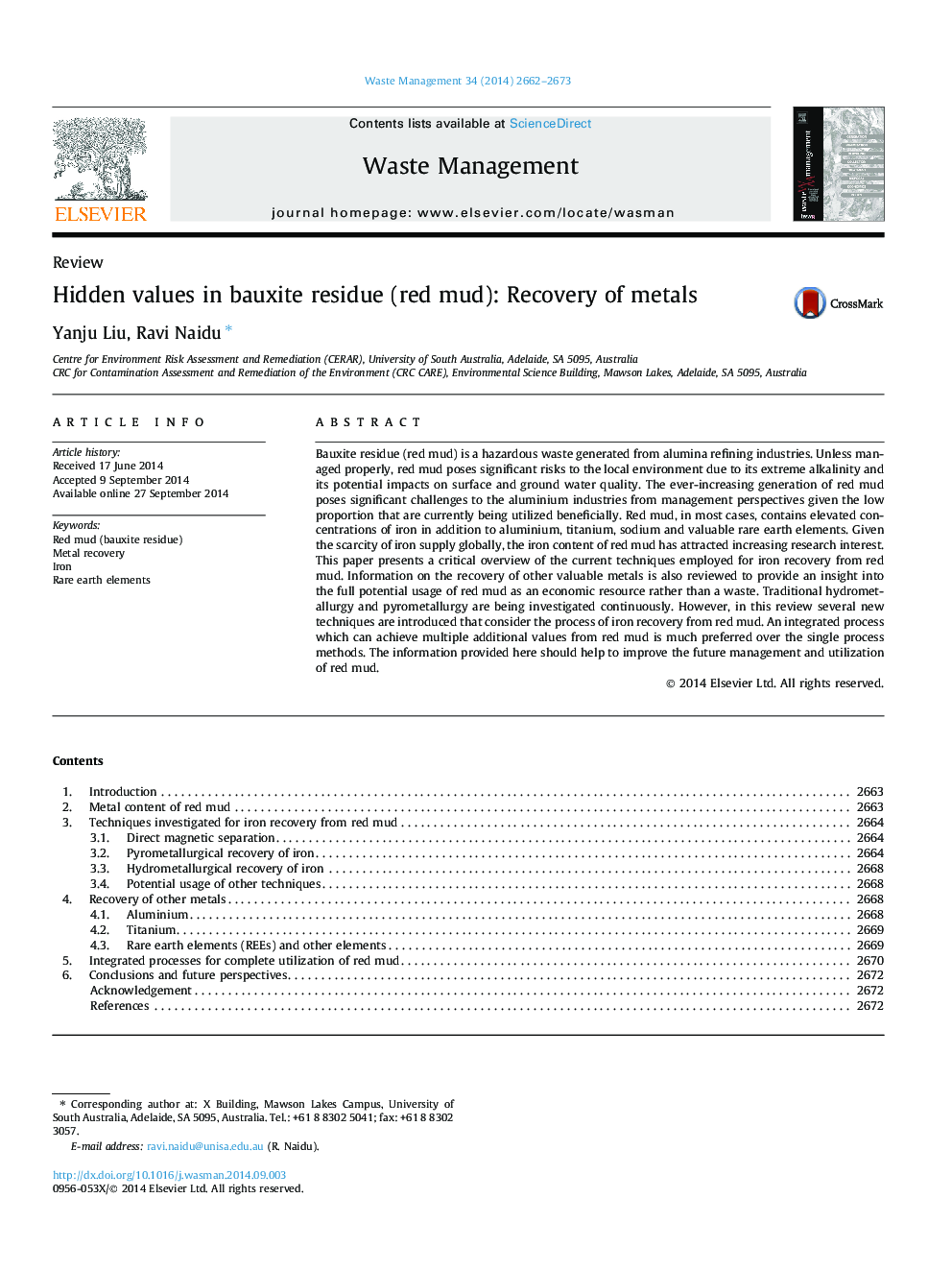| Article ID | Journal | Published Year | Pages | File Type |
|---|---|---|---|---|
| 4471605 | Waste Management | 2014 | 12 Pages |
•Current iron recovery techniques using red mud are depicted.•Advantages and disadvantages exist in different recovering processes.•Economic and environmental friendly integrated usage of red mud is promising.
Bauxite residue (red mud) is a hazardous waste generated from alumina refining industries. Unless managed properly, red mud poses significant risks to the local environment due to its extreme alkalinity and its potential impacts on surface and ground water quality. The ever-increasing generation of red mud poses significant challenges to the aluminium industries from management perspectives given the low proportion that are currently being utilized beneficially. Red mud, in most cases, contains elevated concentrations of iron in addition to aluminium, titanium, sodium and valuable rare earth elements. Given the scarcity of iron supply globally, the iron content of red mud has attracted increasing research interest. This paper presents a critical overview of the current techniques employed for iron recovery from red mud. Information on the recovery of other valuable metals is also reviewed to provide an insight into the full potential usage of red mud as an economic resource rather than a waste. Traditional hydrometallurgy and pyrometallurgy are being investigated continuously. However, in this review several new techniques are introduced that consider the process of iron recovery from red mud. An integrated process which can achieve multiple additional values from red mud is much preferred over the single process methods. The information provided here should help to improve the future management and utilization of red mud.
Graphical abstractFigure optionsDownload full-size imageDownload as PowerPoint slide
